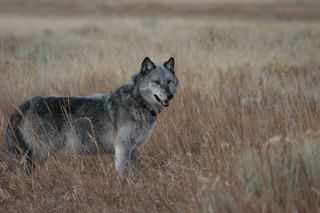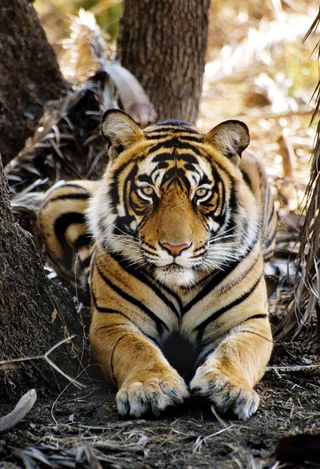
Protection Pays: Local Conservation Helps Entire Species
Protecting vulnerable local populations of an animal may be the key to safeguarding entire animal species, a new study suggests.
Species extinction is generally preceded by the piecemeal collapse of local populations, or different animal communities within the same species that deal with distinct sets of human and environmental factors. So researchers naturally wondered which conditions wielded the most influence over survival.
Such information could prove valuable in assessing threats and prioritizing protection especially as land use and the global climate continue to change.
"Past studies have suggested that all we need to think about is the human component, with the idea that species have basically the same tolerance in different parts of its range," said lead researcher Charles Yackulic, who was at Columbia University in New York City at the time of the study.
"We, too, found that the human component is very important, but there are other factors throughout the range of a species that should be considered," Yackulic, now of Princeton University in New Jersey, told OurAmazingPlanet.
Differences across biomes
Humans can disturb wildlife species through a variety of activities, including hunting, polluting and building roads. Yet Yackulic and his colleagues found that temperature and precipitation, among other climatic conditions that combine to form what is called a "biome," influence the resilience of local populations to such disturbances.
Sign up for the Live Science daily newsletter now
Get the world’s most fascinating discoveries delivered straight to your inbox.
"There is a clear difference across biomes in how tolerant species are to human activities," Yackulic said.

In the new study, published in a recent issue of the journal Proceedings of the National Academy of Sciences, researchers looked at historic and current range maps for 43 large mammals across four continents from Asia's sloth bear to the gray wolves of North America and identified several consistent patterns. While temperate species appeared to be the most vulnerable to humans when living in grasslands, for example, tropical species struggled in arid deserts and moist forests.
For example, the African elephant can be "really hammered" at even lower levels of human threats in deserts as compared to more suitable savannahs, Yackulic said. This is likely due to the elephant's shared reliance on water with humans, forcing the animal to range over larger areas during drought conditions.
As a result, the same level of poaching could trigger very different results in elephant populations across different regions of residence.

Similarly, the necessary size of a protected range or park to conserve a given species of tiger would be different in Siberia compared to somewhere in India, Yackulic explained, adding that government stability, economic pressures and other social factors also play important roles in wildlife conservation.
It came as no surprise to the researchers that protected areas supported a species' ability to persist and that species at the edge of a range were more vulnerable than species in the middle of a range.
Still, the differences across biomes appeared to play a greater role than a population's relative location within a range.
Predicting collapse
The new findings may not only assist in allocating scarce resources between subpopulations of a particular species, they might also bolster predictions of which species are most at risk of collapse.
While the jaguar , brown hyena and brown bear are not currently listed as species of concern, the researchers hint that they may be particularly predisposed to trouble in the future if humans further meddle with their habitat.
"Humans are driving species to extinction; protected areas are conserving them. But when you account for those factors, there's still a lot of underlying variation," Yackulic said. "This is just another piece of the puzzle to help prioritize protection."










